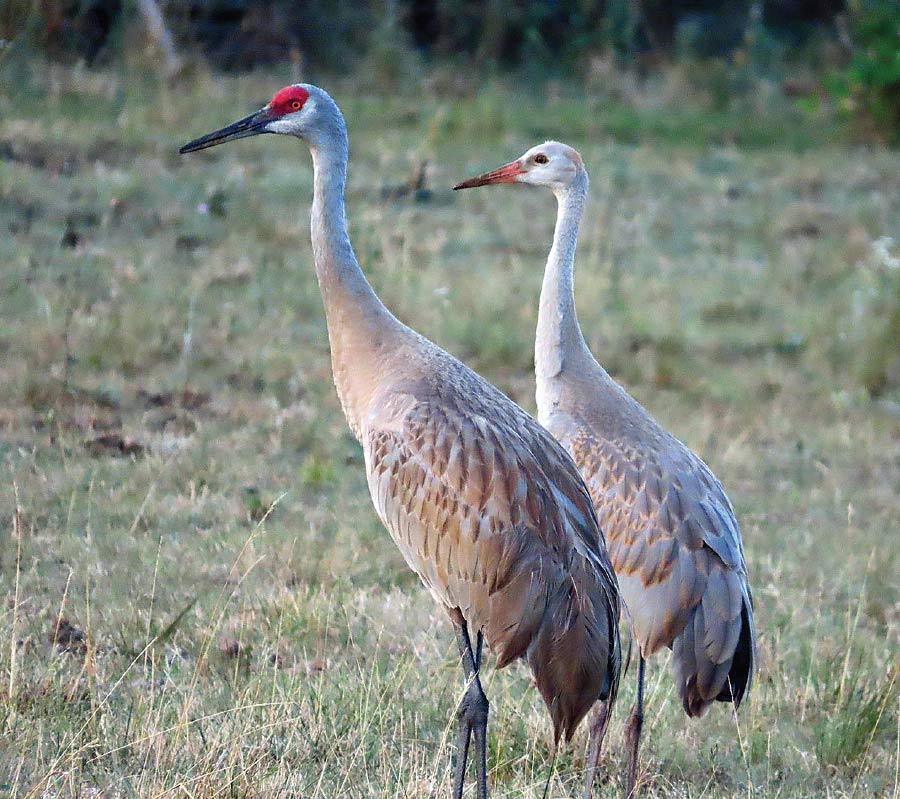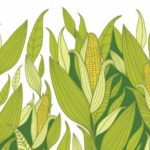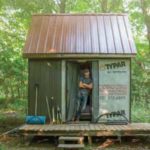
Sandhill Crane
The hiker could hear the rolling, trumpeting calls as he made his way across a field that late fall day. The voices unmistakably belonged to sandhill cranes, and they were flying in his direction.
The two long-legged birds, taller than great blue herons, made their descent and landed gracefully only a few metres away. The lanky creatures looked the hiker up and down for a few seconds as though surprised by his presence. Satisfied that he was not a threat, they turned their attention to each other.
The cranes stood face to face with outstretched wings and began a dance involving much head pumping and bowing, punctuated by huge leaps into the air. For more than five minutes, they twirled and bounced on their gangly legs while croaking and throwing their long necks around.
Sandhill cranes mate for life, and their spirited dance plays an essential role in reaffirming this bond. But the ritual is usually reserved for spring as they prepare for nesting, and it was now late September. What was motivating this strange behaviour outside the nesting season?
The birds were exhibiting what biologists refer to as “autumnal recrudescence,” a partial postseason reactivation of breeding behaviour. Not limited just to sandhill cranes, the incongruous interactions show up among many species. They are perhaps responding to autumn temperatures, shorter days and longer nights, which approximate what they encounter during the spring mating season when males are eager to win the hearts of the females.
Some females caught up in this high-energy state have been observed making weak attempts at building nests, even into October, and a few have even gone so far as to lay eggs. Then at some point they abandon their efforts – presumably realizing that it was all for naught – and resume preparing for winter, either stocking up on food or migrating south.
Certain types of males may be heard in full spring song trying to lure mates that don’t appear to be interested, and engaging in mating rituals that are nothing more than a stage show with no audience.
The act usually backfires, although for some it appears intentional all along. Ruffed grouse have been observed following hikers along trails in fall, softly cooing and purring as they take a sudden affectionate interest in the human race. One last hurrah before the season ends and the snow begins, perhaps.
The off-kilter behaviour might also explain the increase in living-room window bird strikes in the fall, as these seem to happen more frequently in autumn than in spring. Whatever the reason these episodes do result in some unusual occurrences. As poet Susan Stiles expresses it, the fall rituals are simply “the autumnal recrudescence of the amatory urge.”
It’s good that they have a few more months to practice their skills before they are judged by the opposite sex, even if it is all just a dry run ahead of the main event or a false alarm to be witnessed by the occasional passer-by.
Story by:
Terry Sprague
Photography by:
Cecile Yarrow




